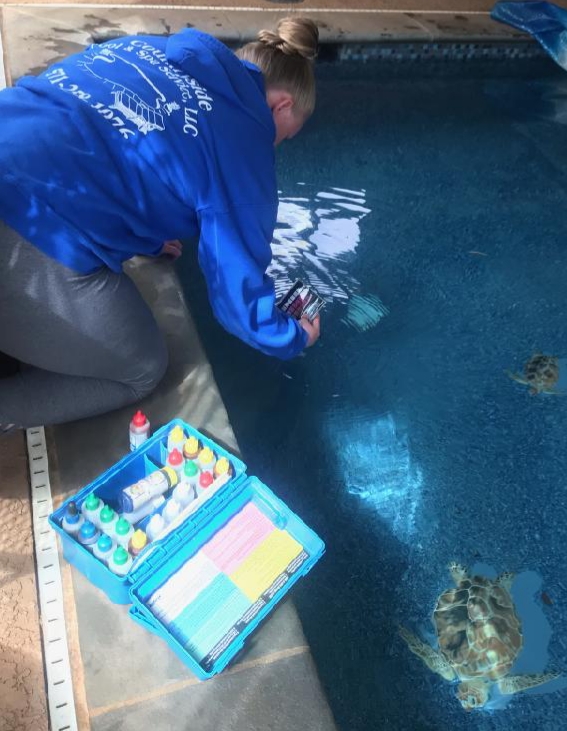
A balanced swimming pool not only looks better, but it will save you a major headache from the costly damage it can do if it is out of whack! If any chemicals are slightly off, it can throw the others off, making you pool a breeding ground for bacteria. Not to mention, unbalanced water conditions can cause severe damage to the pool’s structure and equipment.
Bottom line is, keeping your pool’s chemistry balanced with the right chemicals and quantities is the most important thing! Have a professionally trained and experienced swimming pool service company like, Countryside Pool Services, service your swimming pool once a week. We can take care of the precise water testing and balancing for you!
How Often Should I Test?
Your swimming pool and spa should be tested at least once a week with a genuine test kit, like one from Taylor Technologies. If any chemicals are off-balance, then you will need to test daily after you treat with chemicals until it is balanced.
What Do I Need To Test For?
Before adding any chemicals to your pool water, make sure your pump is on so the chemicals will circulate in the pool. Add one chemical at a time. It is also extremely important to always remember, “add chemicals to water, NOT water to chemicals!”
pH
pH measures the acidity or base of the water. The pH scale goes from 0 to 14, with 7 considered neutral. Pool water pH values below 7.0 creates a corrosive environment, or an acidic condition. Add a base to bring the pH up, into a more basic range to prevent corrosion. pH that is above 7.8 creates a scaling or basic condition. This means that scaly deposits may form, or water will cloud. High pH also reduces chlorine effectiveness.
TA
Total Alkalinity measures the hydroxides, carbonates and alkaline substances in the pool water. You can raise low TA by adding a base to the pool. TA levels should be 80-120 ppm. Total Alkalinity also influences your pH level, so if your pH is off, then be sure to check the alkalinity.
CH
Calcium Hardness measures the softness or hardness of the pool water. Hard water has a higher calcium or magnesium content. Pool water can get murky, scale formations can occur, and you can see staining as well. Stable levels should be between 200-300 ppm.
CL
Free Chlorine is the amount that is available to work with, not including combined chlorine or chloramines. Free choline levels should be at least 1.0 ppm.
Cya
Cyanuric Acid helps keep the chlorine in the water for a longer period of time. UV rays from the sun cause chlorine to dissipate very quickly. The ideal range for Cya is 30-50 ppm.
TDS
Total Dissolved Solids is when water evaporates and minerals are left behind in the water. As it continues, the water becomes more dense with minerals making it harder for chemicals to do their job successfully. Draining the pools water a bit, then adding new fresh water will lower TDS. It is recommended that TDS is less then 2,000 ppm.
Temperature? Why Does It Matter?
The temperature of your pool water influences the effectiveness of the pool’s chemicals. When the water is a higher temperature, the chemicals are more active. You will need less chemicals then if the water was a higher temperature to balance it. Do be aware that bacteria and algae thrive in warm water, so your chlorine usages might be higher.
Balancing a pools water chemistry should be done regularly. Well balanced water ensures your pool is safe and appealing to swim in. Countryside Pool Services can get your pool looking and feeling fantastic with our weekly or bi-weekly service. Give yourself time to enjoy your swimming pool, and let us take care of the harder parts for you.
